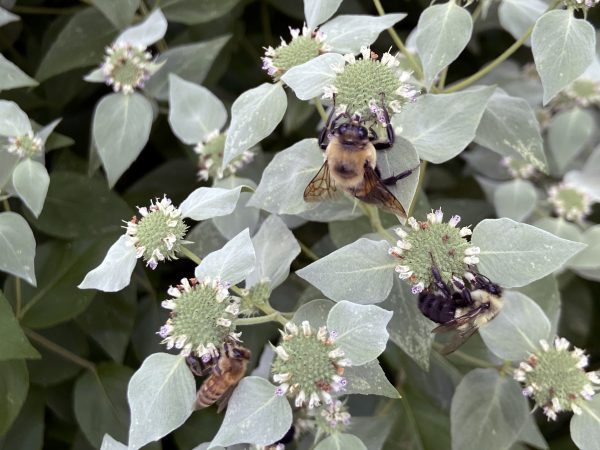Hope is the thing with leaves

Imagine what it would be like to help establish a brand new national park. One that would be larger than the combined acreage of the Everglades, Yellowstone, Yosemite, Grand Teton, Canyonlands, Mount Ranier, North Cascades, Badlands, Olympic, Sequoia, Grand Canyon, Denali and Great Smoky Mountains. One that would be spread uniformly across the country instead of being sequestered out west. One that wouldn’t require Congressional approval or depend on the whim of an executive order or require taxpayer money.
No, the power to make it happen lies with individual landowners.
This is Doug Tallamy’s vision for a “Homegrown National Park.” It would be created by better management of our own back (and front) yards. Tallamy makes the case for such a “park” in his latest book “Nature’s Best Hope: A New Approach to Conservation that Starts in Your Yard.” This is truly a title for our times.
Tallamy points out that if landowners in America replaced half their lawn with native plants, it would create a network of 20 million acres. Land that is currently “an ecological wasteland” would not only support more wildlife, but reduce pollution and provide other benefits.
“We must now act collectively to put our ecosystems back together again,” Tallamy writes.
These scraps of habitat would act as the thread to knit fragmented natural areas together. Parks and forests alone cannot sustain healthy and diverse populations of wildlife. This became clear when the theory of island biogeography was applied to land conservation. For a fascinating examination of this topic, read David Quammen’s 1997 classic “The Song of the Dodo: Island Biogeography in an Age of Extinctions.”
The takeaway? Isolated tracts are vulnerable to species extinction.
“The good news is that we can fix our ecological problems by indulging rather than sacrificing,” Tallamy says. “We will not be living with less; we will be enriching our lives with more.”
To envision what this indulgence might look like in the Piedmont, turn to “The Southeast Native Plant Primer: 225 Plants for an Earth-Friendly Garden” by Larry Mellichamp and Paula Gross formerly of the UNC Charlotte Botanical Gardens. Most of the glossy photographs are courtesy of Will Stuart, who documents plants and pollinators in his Charlotte yard as well as local natural areas.
This is a welcome reference for both the novice gardener and the native plant devotee. The authors break down complicated issues – like cultivars of native species (sometimes called nativars) – in language that’s clear and accessible.
They revisit the elements of garden design and suggest natives to fill those roles – from foundation plants to accent plants, from ground covers to shade trees. They also provide handy lists highlighting host plants, nectar plants and fruit producers as well as plants for challenges such as hell strips, rain gardens and deer predation.
Natives are well adapted to local conditions, but only when their specific cultural requirements are met. Mellichamp and Gross stress the importance of assessing your site, especially your soil. In a new development, builders often scrape away all the topsoil during site prep, leaving compacted clay. Even plants adapted to clay soils can struggle on these disturbed sites. You might have to rebuild your soil with organic matter like compost.
In the long run, proper site assessment and prep will save you time, money and heartache. I learned this the hard way. Among my many failures, I attempted to grow yellow lady’s slipper orchids just because I had shade and cardinal flower in soil that was clearly too dry.
On the other extreme, some plants can do a bit too well. I appreciate the authors’ frank warnings about species that might become unruly in a pampered garden setting (I’m looking at you, mountain mint, and “obedient” plants taking over my own backyard). This doesn’t mean you shouldn’t grow these plants — indeed, they have many appealing attributes — but you should be careful where you place them and be prepared to do a little weeding.
Mellichamp and Gross also address one of the major impediments to gardening with native plants — where to buy them. While they list numerous mail order sources, they missed an opportunity to toot their own horn – the spring and fall plant sales at the UNC Charlotte Botanical Gardens (and Wing Haven) generally offer excellent selections of native trees, shrubs and perennials. It’s also worth asking retailers – whether a locally owned shop or a big box store – to carry more natives.
There are many reasons to grow native plants — their beauty, their resilience and their role in the web of life. The authors also recognize that they “provide a sense of place that can be reassuring in our age of rapid and frequent mobility.” As suburbs and exurbs across the nation increasingly sport the same array of chain restaurants and shops, native plants can help us forge an identity and foster community.